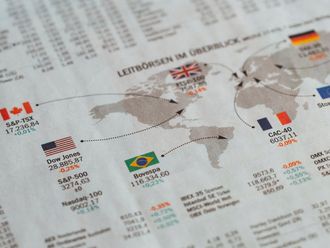Dubai: UAE banks are unlikely to face any massive decline in asset quality over the next two years due to correction in real estate prices, according to rating agencies and analysts.
“We believe that a potential price correction on the UAE’s real estate markets will have much less of an effect on banks than it did in 2009. We project a softening in residential real estate prices this year, particularly in the secondary market, given our expectations for an economic slowdown and deteriorating investor sentiment, which will cool demand,” said Timucin Engin, credit analyst with Standard & Poor’s
While the residential property markets in Gulf Cooperation Council countries have improved over the past two years, with Dubai taking the lead, the Dubai market started to soften in the first quarter of 2014, with lower transaction volumes and stabilising prices and rents. Meanwhile, a large number of new projects have been announced over the past 18 months, with developers and investors wanting to capitalise on increasing prices.
According to S&P there are several reasons why the effect of another price correction should be limited for banks. First, price declines are unlikely to be as big. Second, key UAE developers now operate with much stronger balance sheets relative to their financial position in 2009. Regulation calls for them to secure equity funding before they launch any project. Plus, key developers have been funding a large portion of their more recent projects through advanced sales to customers rather via short-term bank funding. Finally, the UAE has introduced well-defined loan-to-value restrictions to prevent household debt build-up that should protect the performance of residential mortgages. However, we could see some credit losses from smaller developers and companies in other sectors that have invested in real estate as a sideline.
Another source of risks for UAE banks is the equity markets. Although the banks have minimal direct equity exposures and most have guidelines that call for exposure to stock market-related lending, some delinquencies are likely to come from this sector.
Over the last four to five year the UAE banks have built strong provisions which analysts expect will protect the balance sheet from any potential spike in non performing loans and credit losses. At end-2014, the rated banks had a loan loss coverage ratio of about 122 per cent and a NPL ratio of about 3.4 per cent.
The banking sector is expected to avoid a big surge in NPLs in 2015 and beyond because of the intrinsic strength of the local corporate sector. During the 2009 and 2010, the asset quality of banks suffered because of their exposure to highly leveraged government-related entities (GREs) in Dubai, as well as banks’ exposure to real estate sector.
Over the past few years, however, GREs have greatly improved their overall financial profiles as a result of higher cash flow generation, as sectors such as tourism and retail rebounded. Plus, we understand that certain corporate borrowers were able to improve their financial positions by capitalising on higher prices on the real estate and capital markets to sell off their holdings.












